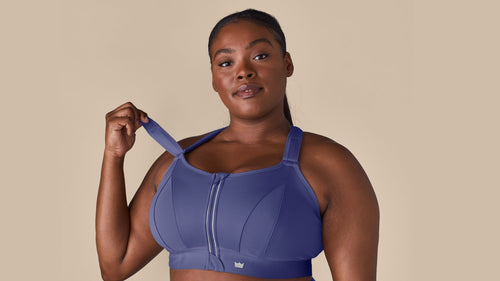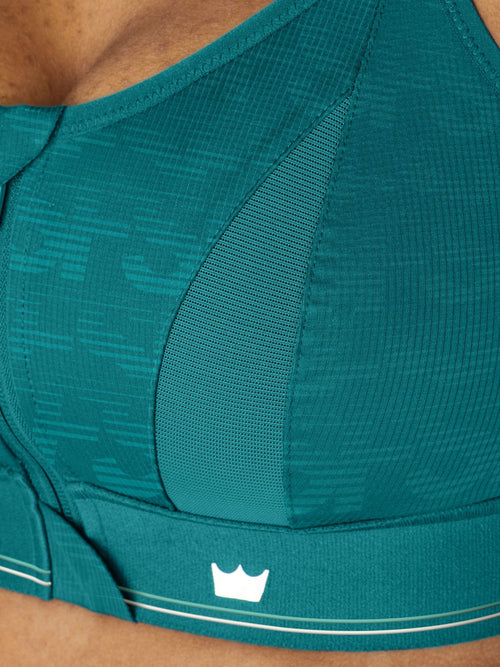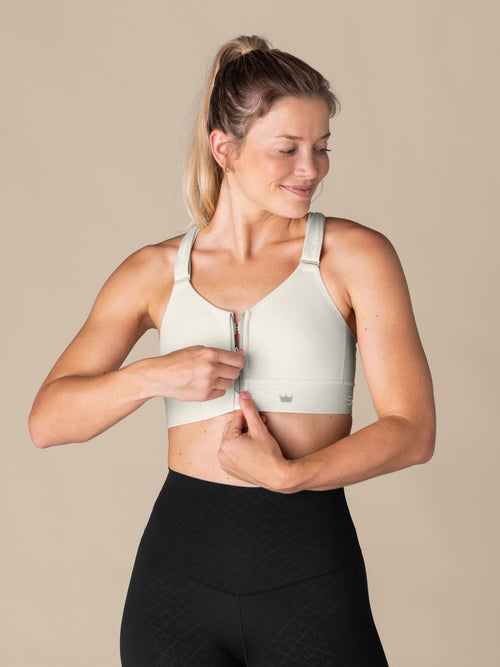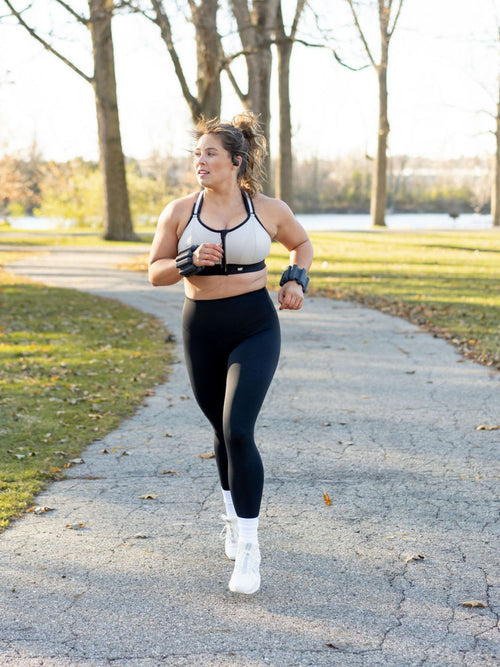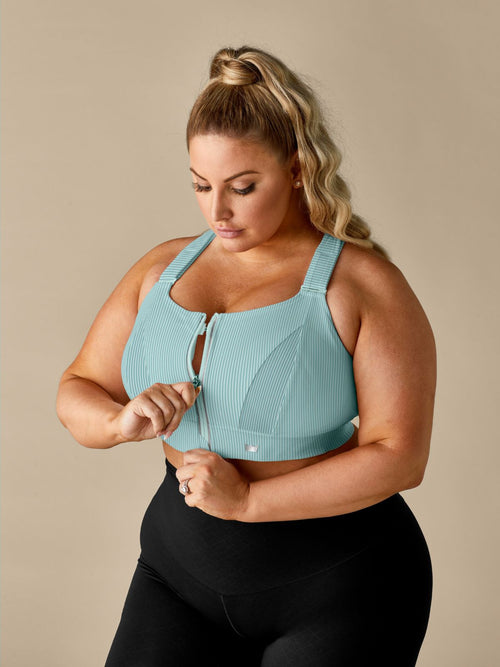New Year Sale 20% Off Shop Now
Will Running 30 Minutes A Day Help You Lose Weight?
Long-distance running is impressive, but it can be a chore. Many people feel compelled to spend hours each week running just to lose or maintain weight. If you're trying to shed pounds, you might be wondering if there's any merit to this line of thinking. Will running 30 minutes a day aid in losing weight?
Running 30 minutes a day will help you lose weight, so long as the runs are intense. Rather than focusing on distance, running faster or doing sprint intervals will be more effective. By increasing your speed you’ll burn more calories and save time. Repeated daily, you’ll burn enough calories to lose weight.
For those who love running and can make time for it, you don’t need to limit the length of your run. If you don’t enjoy running or are in a rush, you'll appreciate the fact that shorter high-intensity running workouts can be just as helpful as running a long distance. 30 minutes is plenty of time it might even be too much time for beginners. Keep reading to learn why.
Can You Lose Belly Fat By Running?
Running is an effective method for getting rid of stomach fat. Many people believe that ab exercises are the best way to trim belly fat, but they won’t help you lose fat in that area. Ab exercises make your muscles stronger, but to burn fat you need something that burns more calories, like running.
One of the hardest areas to lose fat seems to be the stomach. It can be a problem area for both men and women. Whether you’ve tried everything to get rid of stomach fat or are tackling this issue for the first time, running can help.
The key element of this is intensity, here's why.
Intensity Burns Calories
SHEFIT's no stranger to HIIT; high-intensity interval training is a popular format around here as well as the entire fitness industry, and for good reason. The more intense your workout, the more abdominal fat you’ll burn.
One study on HIIT's calorie-burning capabilities found that low-intensity workouts barely burn any abdominal fat. Medium-intensity is better, but high-intensity training gives you the best return on your investment.
If you like the idea of this and want to apply it to running, you might be wondering how to begin.
How To Start High Intensity Running
To structure a high-intensity running workout, you'll want to:
- Start by picking your work-to-rest ratio. That’s the amount of time you’re sprinting versus the amount of time you’re resting.
- For beginners, start with a little bit of work paired with a lot of rest. For example, 30 seconds of sprinting followed by 4 minutes of slow walking or complete rest.
- This type of workout allows your body to rest before you run again, which means you can run at higher speeds and greater intensity. Even though you’re going to run for about half the amount of time as you would if you went for a jog, the results will be better.
Even more impressive, the researchers in the mentioned study found that high-intensity training could burn stomach fat even if you don’t lose weight.
So if you decide to start running every day, it might be better to track your progress using a tape measure around your abdomen than a scale, as you may be losing fat, but the pounds may not be dropping.
How Can I Lose Weight Fast By Running?
To get results quickly, running isn’t enough. Exercise is a big part of the weight loss equation, but it’s not the only thing that matters. Nutrition, among many other factors that go into healthy weight loss, is an often-overlooked but crucial element in your quest to shed pounds.
Running Isn’t Enough
A study on postmenopausal women looked at the effects of diet on weight loss. The study asked one group to follow a weight-loss diet for 16 weeks, while another group did the same diet but added exercise as well.
Rightfully, anyone hearing about how this study was conducted would think that the group who exercised would far more fat than the group who didn't, but this wasn’t the case.
The group who followed the diet but didn’t work out lost 6.1% of the body fat on average. The group who added workouts lost 6.9% on average. While working out definitely helped, the bulk of the results came from dieting, and the fat loss with the addition of working out was not a significant change.
So as you rush to lose weight for any reason, hopefully, this serves as a reminder that losing weight isn't solely dependent on exercise, it depends entirely on the number of calories you consume vs. the number of calories you burn.
That sounds simple, but burning more calories than you take in is extremely difficult. The human body is biased towards storing fat, not burning it.
While we'd all love it to be the other way around, there's still hope.
You just need to understand why you might not be losing weight quickly by running. Sure, you’re burning calories, but you need to think about how much you’re consuming.
How to Eat Less
It’s not uncommon to go for a run and then reward yourself with a treat. Exercising can make you feel hungry, or make you crave a reward in the form of dessert. When you start a running program, make sure you’re taking care of the diet side of things, because that’s where the bulk of your results ultimately come from.
And by no means does this mean fasting or starving yourself. Instead, this is about making the right choices in your diet. There are many ways to cut down on calories, but ultimately you need to experiment to find what works best for you.
For example, you could swap out any junk food you’re eating for healthy snacks, like fruit and nuts. Another easy way to cut calories is to drink less alcohol.
Alcoholic drinks are calorie-dense. Particularly cocktails, which have extra ingredients that can add hundreds of calories. In general, you should avoid drinking calories because they don’t fill you up. That means avoiding soda, fruit juices, and smoothies.
While we've focused on nutrition as an important means to losing weight, and rightfully so, there are several other important things you can do to help lose weight quickly. If this is an important goal for you, we've built a list of 10 easy tips to help you on your quick weight loss journey, but without all the gimmicks or fad diets.
How Much Should I Run A Day to Lose Weight?
Intense running workouts can be effective for weight loss in as little as 5 minutes a day. A study found that four sprints, of 30-second intervals with rest in between, can be as effective at burning calories as running 30 minutes straight. Weight loss in running is about intensity, not duration.
Short, intense runs burn calories more effectively and efficiently than longer, less intense runs. If you run with less intensity, you'll need to run longer to burn the same amount of calories as a more intense run.
The amount of running required to lose weight also depends on your condition, as that has control over the intensity of running. For beginners, it's best to ease into this, prioritizing your time resting to running during training.
Sprints Versus Steady State Training
Sprints are about as intense as you can get in terms of running workouts. They’re exhausting, but the good thing is they don’t take a long time. One study compared jogging, running, and sprinting workouts to see which one burned the most fat.
The study consisted of three groups of participants. One group ran at 65% of their max intensity for 30 minutes. The next group ran at 85% for 30 minutes. The third group performed four 30-second sprints as fast as they possibly could, with four minutes of rest between each sprint.
You’d think that doing two minutes total of running would burn far less fat than running at a fast pace for 30 minutes straight. However, they were mostly equal.
The only group that didn’t burn much fat was the 65% intensity group.
It’s All About EPOC
The same study that measured calories burned in jogging, running, and sprinting also examined EPOC, which is short for excess-post exercise oxygen consumption.
It’s exactly what it sounds like, a measurement of how much oxygen you use after the workout.
When you exercise you breathe harder because you need more oxygen. The same thing happens after your workout.
You won't notice it, but you’re usually breathing harder than normal for up to 24 hours following a workout. And the insight here is the harder the workout, the harder you’ll breathe after.
This might not seem like a big deal, but it also means that your metabolism is elevated after a workout. The higher your EPOC, the more calories you’re burning after a workout.
It turns out that sprinting workouts raise your EPOC more than running at a steady pace, and certainly more than jogging.
Generally speaking, the faster you run, the higher your EPOC. In other words, it’s not about how long you run, it’s about how intense your workout is.
30 Minutes is All You Need
If you want to lose weight, a combination of diet and exercise is important. You need to get your body into a fat-burning state by burning more calories than you eat. Doing so consistently will result in weight loss.
While changing your diet accounts for perhaps the biggest amount of weight loss, exercise is important. Running is a good choice because it requires little equipment and can be done outdoors or inside on a treadmill.
Running every day for 30 minutes will help you lose weight, but the intensity at which you run is more important. In fact, doing only four 30-second sprints can burn more fat than running the full 30 minutes at a jogging pace.



